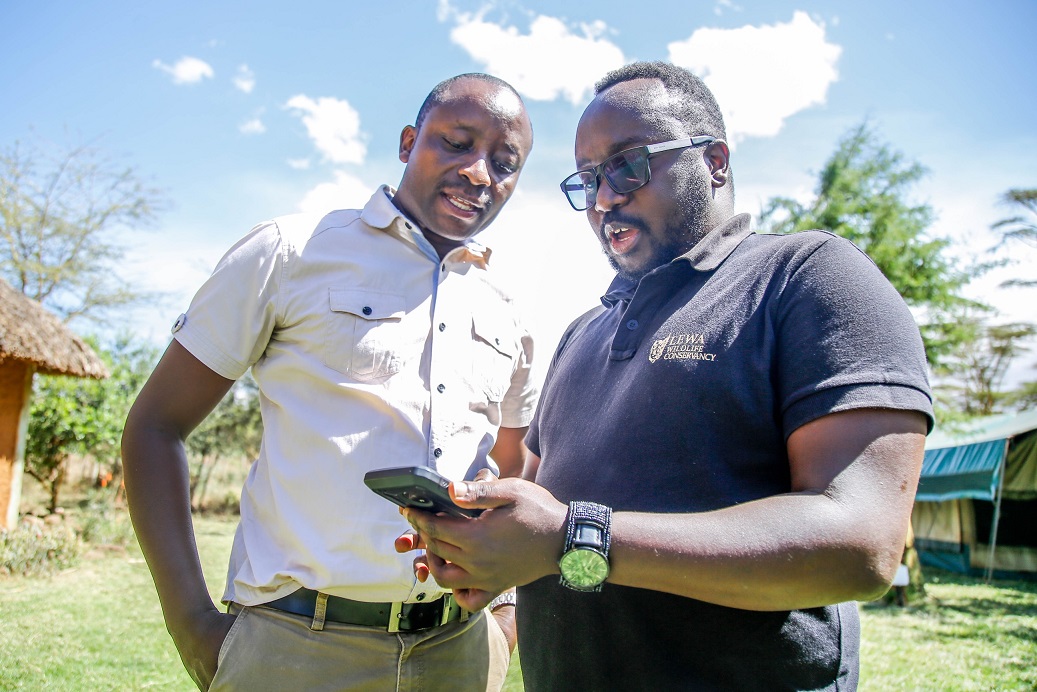
Habitat loss is probably the greatest threat to the variety of life on this planet today. As human population growth continues to expand at an alarming rate, the number of resources available become even more scarce, leading us to clear up forests for the expansion of agricultural land, harvesting of timber, the growth of cities and infrastructure like oil pipelines.
Around half of the world’s original forests have disappeared, and they are still being removed at a rate 10x higher than any possible level of regrowth, making it even harder for wildlife to repopulate as most of their lives are spent looking for fresh pasture and water in far off lands & escaping the dangers that come in their way, i.e, human population.
The Lewa Wildlife Conservancy, home to the Safaricom Marathon, has not only been a major beneficiary of marathon funding over the 20 years the marathon has been held, but has also been at the forefront at steering important conservation efforts not just in the country but around the continent.
I sit down with David Kimiti, Head of Research and Monitoring at The Lewa Wildlife Conservancy who has been in this position for close to 2 years now to tell us more about how poaching isn’t the greatest threat to wildlife, but we can do something to save their habitats:
 What exactly does your work entail?
What exactly does your work entail?
I co-ordinate the activities of the research and monitoring department which is tasked by the management of the Lewa Conservancy to provide actionable information about conservation decisions.
We also collect data on wildlife conservation and interaction and use our best knowledge to interpret those relationships. We’re also keen to monitor any problems that need management focus, bring them to management’s attention and take the necessary actions in the best interest of the ecosystem
How does your work intertwine with conservation education?
We provide the information that’s necessary for conservation education section to pass down to the public, and we do this in the simplest language possible. From numbers to relationships to interactions, we put this data in a way that children, students in tertiary institutions and even the older generation can understand and use to help us in the conservation journey.
In last year’s Impact Report, you talked about why understanding ecosystem scale ecological interactions is a necessity for endangered species conservation. Please expound more on this
The focus of conservation has very often been on site specific species and that’s well and good for the survival of the species in a particular area but when you look at the population of that species nationally or globally, we have to think of their conservation from a national perspective.

For example, the rhinos in Lewa are affected by animals coming through from other ecosystems. If we want those animals coming from other ecosystems to survive, we have to think of grassland management and rangeland management all the way up in Samburu, Marsabit and other landscapes which are interconnected. It doesn’t really help if we conserve one portion of the ecosystem and let the rest of the ecosystem degrade. For us to be successful, we need the rest of the landscape to be successful as well.
What part can we play in helping to optimize these habitats?
In terms of optimizing habitats, the thing I personally like focusing on is habitat health. You could have all the wildlife you want in a habitat but if their food, water and cover isn’t available then you wont have a healthy ecosystem. If you look at the population of carnivores, especially lions, their population isn’t as greatly compromised because of human-wildlife conflict as it is by habitat degradation. If herbivores don’t have enough food, they move to other habitats to get this pasture. A result of this is either death of the herbivores due to the long distances covered or less population in the habitat the lion is used to. This in turn leads to lions moving as far to get their food or encroaching on human habitats to prey on cattle which leads to their death. We need all these animals balancing out for an ecosystem to be healthy.
 So conservation is more than just protecting rhinos and other endangered species?
So conservation is more than just protecting rhinos and other endangered species?
Most definitely. I think we’ve done a de-service to the term conservation because we immediately jump to charismatic wildlife, national parks and so forth. Conservation is a much more holistic school of thought because all parts of the ecosystem are being taken into consideration, including those we might deem insignificant like ants or rats.
Conservation starts with the simple things, like making sure we recycle plastic to making sure we don’t waste water to planting perennial grass that these wildlife can consume especially during the drought period.
What are some of the methods or modes of technology you use at Lewa to collect this information?
We use this monitoring tool called SMART through which were able to collect information on animal distribution, wildlife numbers, where they are and even how they eat. This information is then collected by scouts on the ground via simple android phones and this is able to be plugged directly into our research platfroms where we then visualize it, map it & assess it.

What part has the Safaricom Marathon been able to play in the conservation conversation?
It would be hard for me to pinpoint exactly how the Safaricom Marathon has been beneficial to us since its played very many roles and worn many hats in terms of fostering conservation efforts.
From helping us in engaging the community on how they can play their role, to influencing young minds on attitudes, knowledge, and behaviour about wildlife and wild places to the help they’ve helped put in in our research, the Safaricom Marathon has been more than instrumental in this walk with us.




















